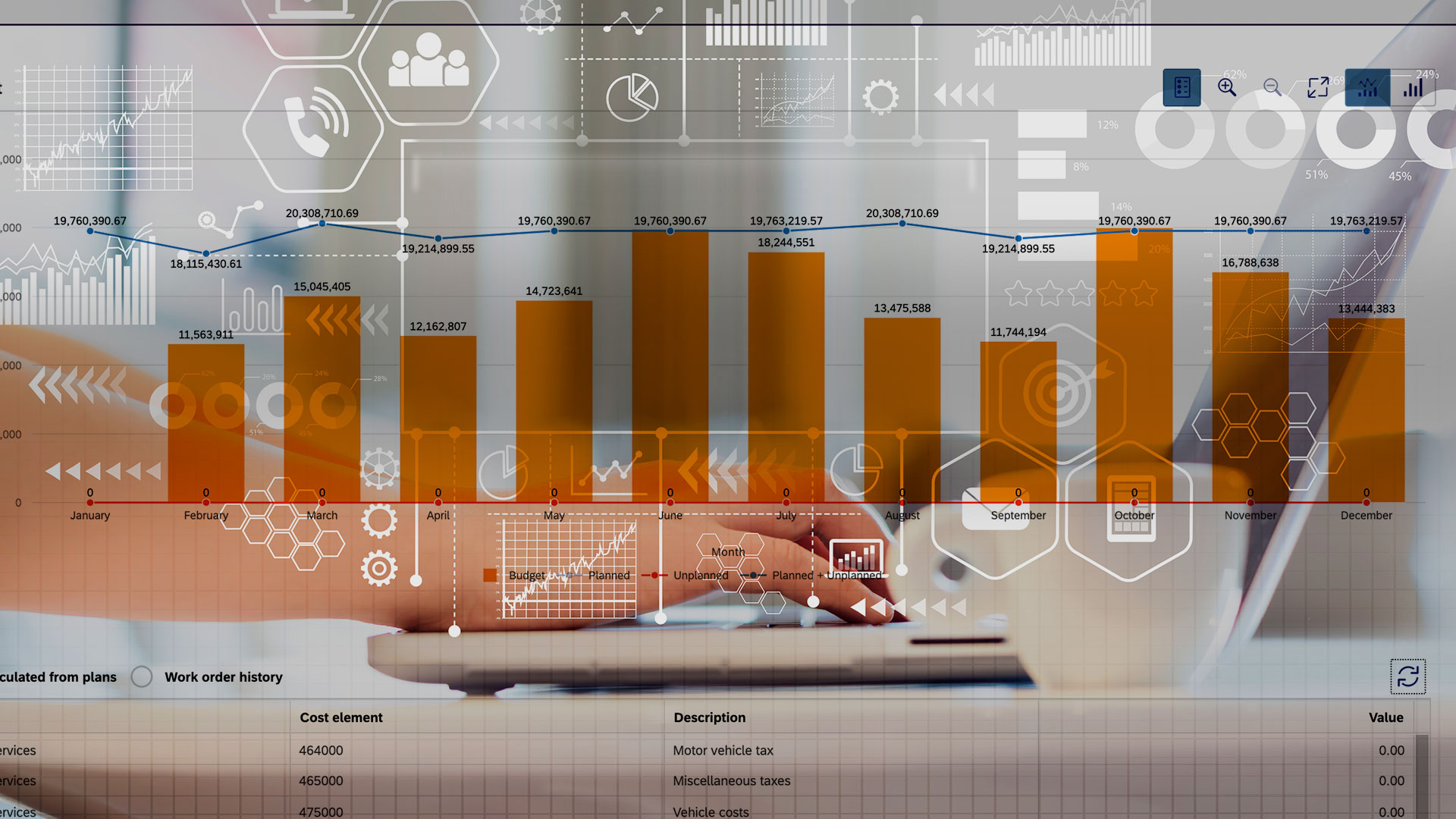As 2021 draws to a close, we look back to the trends that have had a significant impact on maintenance operations. From the worsening labor shortage to lingering supply chain issues, we can see that many of the challenges from 2022 will continue to be a force to contend with in 2022.In this article, we’ll explore the trends and related resolutions to consider in maintenance operations planning and investments for the coming year.
EAM Challenges and Forecast for 2022
What trends and challenges do we expect to be a force in 2022?McKinsey asked majorJournalists, media executives, columnists, commentators, and media critics — from the US and around the world: What major themes will we see in global media in 2022? What should we see more of?
“The high interest we see now in global supply-chain stories will continue to grow.
This includes big-picture stories about systems under duress and global worker shortages.
– Meredith Artley, Editor in Chief and SVP, CNN Digital Worldwide
“It’s about labor. COVID-19 has exposed the long-standing divide between labor and corporations in terms of wages and working conditions… and it’s going to become more intense come 2022.
– Marsha Cooke, SVP global news and special projects, VICE MEDIA LLC
“Battles over climate change policy and implementation of agreements will dominate national and international news agendas in 2022. This, of course, encompasses so much. After so many years of discussion, we may see a revolutionary breakthrough in corporate social responsibility and the consideration of environmental, social, and governance criteria to rate companies’ performance, conduct, and future strategy.”
– Valérie Arnould, Deputy Director, digital revenue network, World Association of News Publishers
“The rolling changes to our world brought about by exponential technology developments and the disconnect with slower, linear approaches of our government and institutions will surely remain a dominant story in 2022. There are deep ramifications for these technology developments, including the continued impact of crypto on finance, the tech platforms on information and democracy,AI and automation technologies on jobs, renewable energy sources and better batteries on the environment, and synthetic biology on our health and medicine. But the flashpoints will only get messier and have greater business and financial implications.”
– Kevin Delaney, Co-founder and Editor in Chief, Charter
Certainly, these challenges are not new topics, but as the journalists noted, they are becoming more urgent or lingering requirements for 2022 planning.Is it time to revisit your current path and consider prioritizing actions to better manage and improve maintenance operations? Take a look at our articles this year that pull together proven strategies and tactics to address these challenges and more as you plan for 2022.
2022 Resolutions
1) Better Planning to Manage Through Continued Supply Chain Issues
Maintenance teams need to improve their ability to manage the inventory of parts and materials to maximize production uptime. It is challenging enough for production teams to deal with the supply chain issues for raw materials. Add the uncertainty of obtaining spare parts to quickly repair downed equipment, the situation becomes unacceptable.
Maintenance operations need to do their part to reduce unexpected downtime and preventive maintenance is the tried and true path to mitigating downtime. But committing to the execution of planned maintenance tasks can be especially challenging when corrective and emergency repairs take precedence. Given the shortage of skilled labor, the situation is only getting worse.
There are proven maintenance strategies, like reliability-centered maintenance, that can help you plan your maintenance approach to minimize expenses and optimize the use of your limited workforce.
If you don’t already utilize sensors to facilitate inspection rounds and reduce preventive maintenance frequency, consider getting started on the path towards predictive maintenance.If you are already on this path, consider the steps to further your progress to take full advantage of these technologies for predictive maintenance.Sensor technology can give you the advanced warning of a failure to enable the time needed to procure parts and materials.
Minimizing surprises and turning around a reactive maintenance department, will not only reduce downtime, but it will also improve the advanced planning of replacement parts and materials due to the visibility of requirements from creating the PM plans.
2) Improve Job Attractiveness, Hiring, and Retention of your Skilled Maintenance Workforce
Besides deploying technologies to drive efficiencies, technology can help you improve job quality to attract and retain industrial maintenance talent.In fact, modern day technologies to support work tasks such as mobile devices and equipment sensors are fully expected by the younger generations in maintenance jobs.
With what they are called the “great resignation”(employees just leaving their jobs over the latter half of2021),it is critical to deploy strategies NOW to overcome the shortage of skilled maintenance labor. Successful organizations will focus on how to “do more with less” as opposed to hoping that the situation will quickly turnaround.
And, as you look at your plans for 2022, consider how to make your maintenance department organization structure more effective in order to work with the staff you have or worse yet, with fewer skilled technicians.
3) Increase EAM Planning in Support of Environmental, Social, and Governance Evaluations
Environmental, social and governance (ESG) is gaining greater interest with investors who are evaluating how companies mitigate these risks to ensure their long-term sustainability as a business.Maintenance operations teams are no stranger to developing risk mitigation plans. ESG forces the effort beyond the usual EAM plans. If you aren’t looking at your plans with an eye towards ESG, now is a good time to start.
Part of ESG planning is the evaluation of how companies can adapt and be agile in the face of volatility, uncertainty, change and ambiguity (VUCA) in today’s business environment.To address these challenges, the International Standards Organization (ISO) developed theISO 55000 series (55000, 55001, and 55002) of international standards covering the management of assets of any kind. The ISO 55000 series describes what a company should do to maximize the value of its assets on a sustainable basis.
Social strategies to protect the workforce is an on-going and expanding consideration for advancing maintenance operations management.It is also a driver of growing compliance regulations especially for food-quality plant maintenance for food & beverage manufacturers.
4) Invest in AI and Automation Technologies to Optimize EAM
Analysts have been consistent in promoting the acceleration of adoption of digital technologies is necessary in today’s environment. Not only to manage the challenges of managing people through a pandemic, but also to provide the agility to respond to sudden changes in their operations. The side benefit is greater productivity to deal with the labor shortage situation.
As McKinsey& Co. found in their research, “When companies get all of the requirements right, the results can be impressive. Leading players in a variety of heavy industries have used digital tools in dramatically reducing unplanned outages while boosting maintenance-labor productivity. Higher availability and a more-efficient workforce have increased profitability by 4 to 10 percent in some organizations.”
Getting the “requirements right”, requires effective change management for industrial maintenance teams.
Industry 4.0 technologies are key to growing cost-effective predictive maintenance strategies.Advancing your use of these smart planet technologies will be important in 2022, as the Fifth Industrial Revolution (Industry 5.0) will take these capabilities a step further by improving the collaboration between humans and machines, allowing humans to work even more smarter and more efficiently.
Planning for a Successful 2022
Annual Maintenance Planning
As you finalize your annual maintenance plans for 2022, consider the investments in processes to improve your planning and budgeting process. Creating a bottom-up, data-driven, maintenance budget with SAP can be challenging. And if you did this recently, consider what it’s going to take to keep track of your actual spend to budget in 2022. There is a better way, with an automation solution to support the process of maintenance planning and budget management. The solution can maintain views of the department budget and spending by financial cost categories as well as by maintenance operational views.
Planning and scheduling automation tools canals help you reduce budgets with more effective maintenance planning– including annual planning, down to the monthly/weekly and daily planning and scheduling of maintenance tasks.These tools are key to turning around a reactive maintenance operation and gaining control of limited resources.
Measuring Results
Now is a good time to establish baseline measures to track the effectiveness of your maintenance operations in 2022. Here’s some common measures to consider tracking for next year:
- Wrench time – when was the last time you conducted a wrench time study? Do you know what are the common time wastes for your valuable, limited technician staff? A wrench time study is a great way to uncover the low-hanging fruit of time wastes nonetheless benchmark your operations with other similar organizations.
- Maintenance effectiveness – Look at your 2021 results to evaluate your percentage of planned, corrective and breakdown maintenance work. Again, compare to benchmarks and set goals for 2022 to shift towards more planned maintenance for lowering your costs and optimizing your use of resources in the long run.
- Schedule compliance – and similar planning measures help you identify the root causes of low compliance issues to improve planning accuracy and staff efficiency
- Downtime – MTTR, MTBF, OEE are all measures that can help drive collaborative conversations with production to optimize operations overall.
Justifying the investment in automation and mobile solutions
Building the business case to invest in solutions for the maintenance department doesn’t have to be difficult. Often a quick, back-of-the-envelope calculation can demonstrate the potential for real cost savings and productivity improvements. You can add more rigor with these cost savings analysis tools:
- Mobile EAM Savings. Justify the investment in replacing paper with mobile devices for technicians to work directly with SAP PM, the most obvious impact is reducing resources due to the wrench time improvements. And if you need to justify a maintenance solution investment without cutting headcount, consider making the case from the hidden cost savings.
- Planning and Scheduling Savings. Justify the investment in adding automation to the process of maintenance planning and scheduling from SAP PM data. In this whitepaper, Unleash the Power of SAP and Save, we outline the savings in terms of improving wrench time, operational effectiveness and time savings for the planners and schedulers.
20-Years of EAM Innovations
For two decades, we’ve been staying on top of the evolution of challenges for maintenance operations in asset-intensive industries.In 2021, we celebrated several milestones in our evolution as a company:
- Gemspring Capital partnership –at the beginning of the year, we went into partnership with Gemspring to support our rapid global expansion to serve and expand our enterprise clients with operations around the world.
- SAP Silver Partner – for over 15-years, we’ve been focusing on innovations in EAM for SAP including developing our own proprietary SAP integration technology and sustaining SAP certifications for our EAM software and mobile solutions. Few, if any companies, can say they have been focused on SAP EAM and mobility for more than a decade.
- Successful Customers – we are proud of the results our customers have achieved and continue to experience as we evolve our partnerships to achieve new levels of productivity. Our current global enterprise customers are also key to our innovation roadmap, including our latest launch:
- Budget Management automation – we recently launched a new innovation to further improve how companies utilize SAP PM for annual budgeting and budget tracking. This solution is another example of augmenting and optimizing SAP with today’s automation technologies.
- Sigga 20-year Anniversary – Our long history of dedication to SAP and EAM is your guarantee of results.
As 2021 draws to a close, here at Sigga, we look forward to partnering with our enterprise customers to overcome current and future challenges in EAM.Our talented team are tirelessly working on new innovations to help companies get more done with fewer people, optimize maintenance metrics, and provide the agility needed to succeed in 2022 and into the future.
Choose an experienced partner to simplify your SAP EAM workflows.




